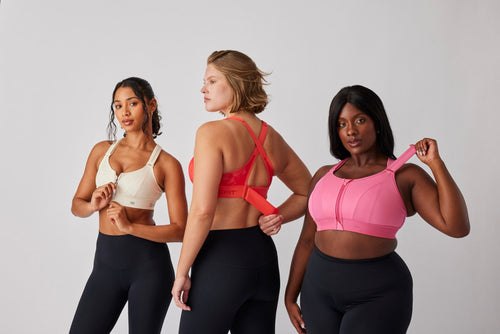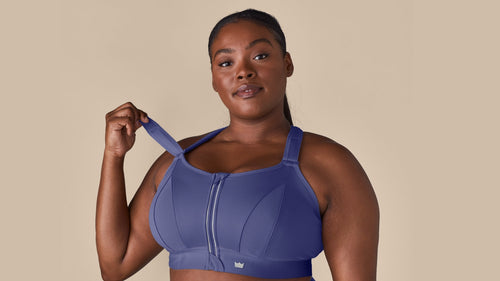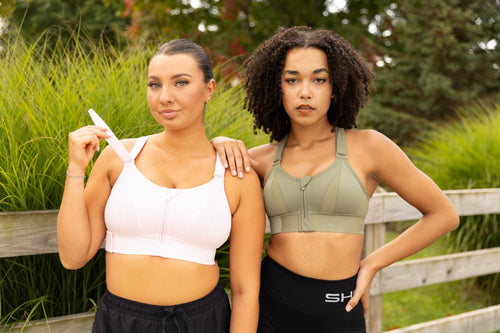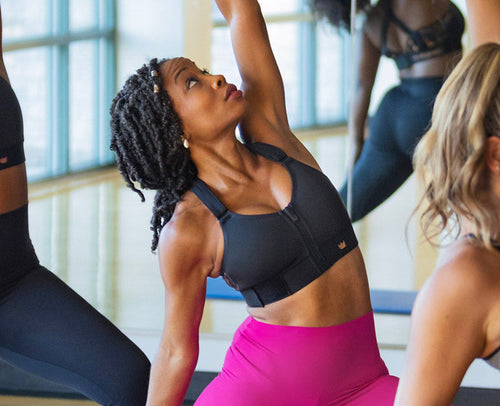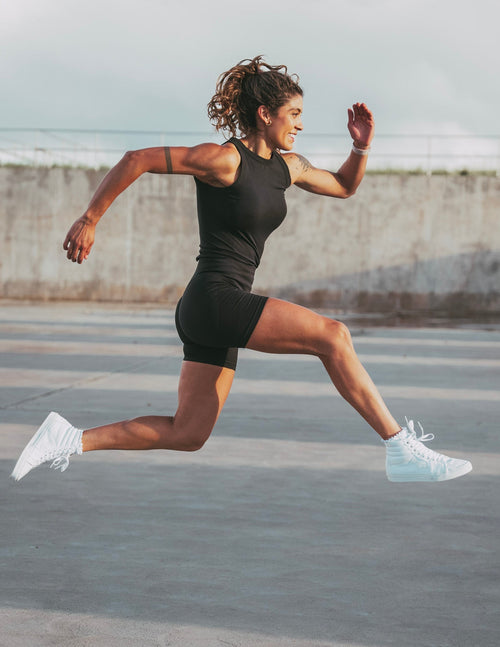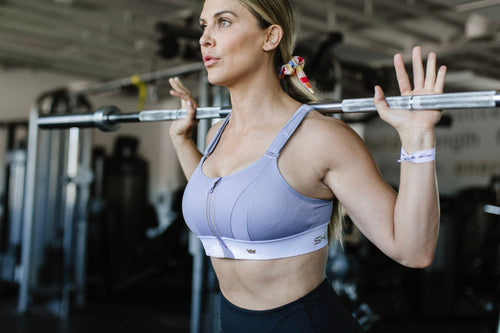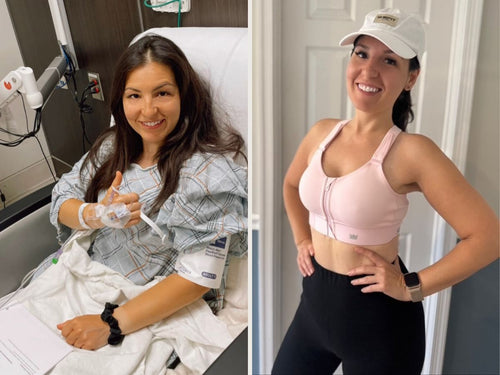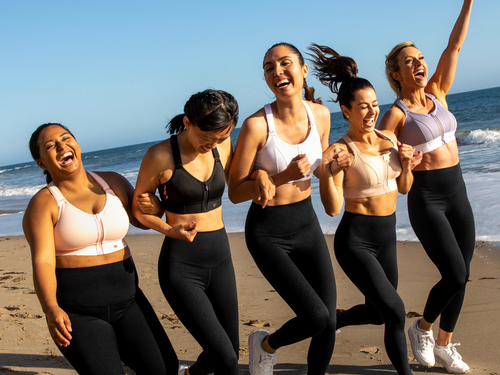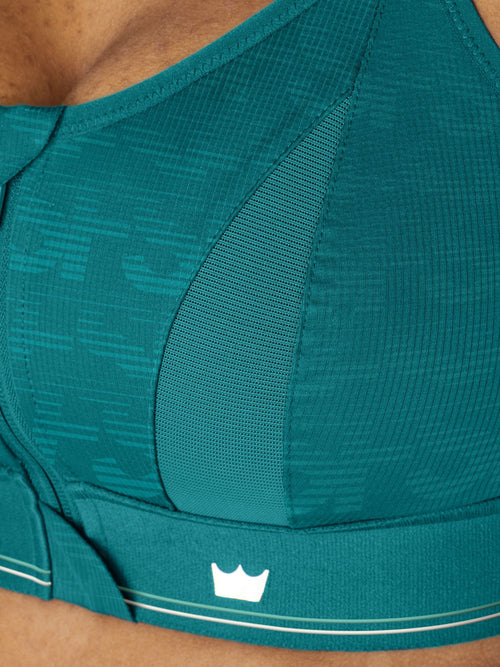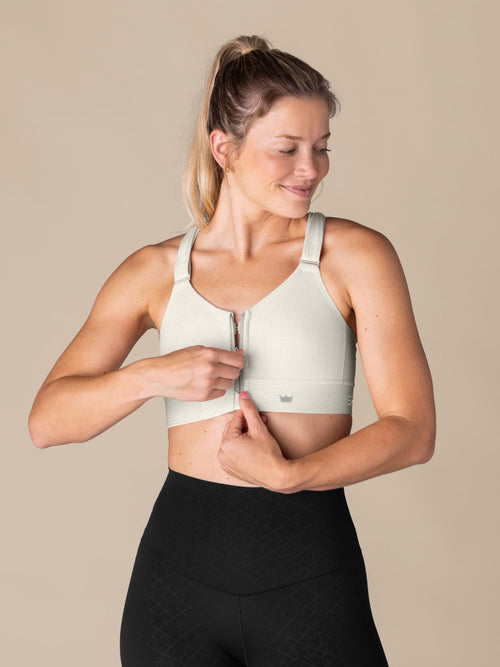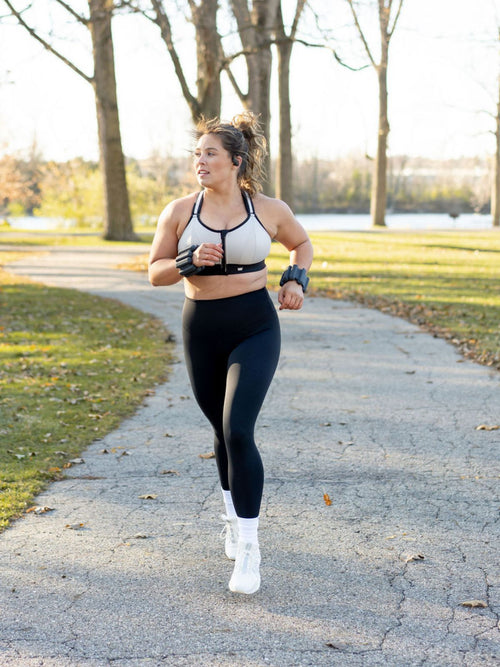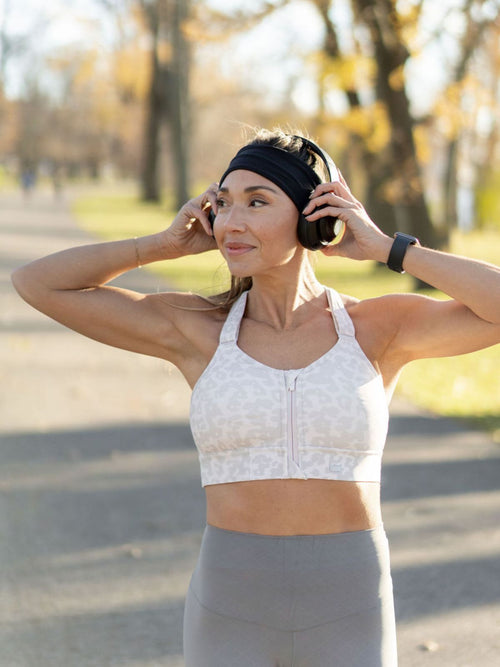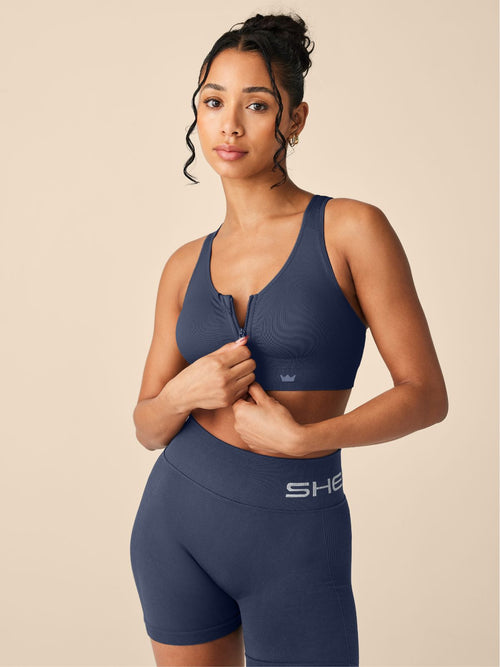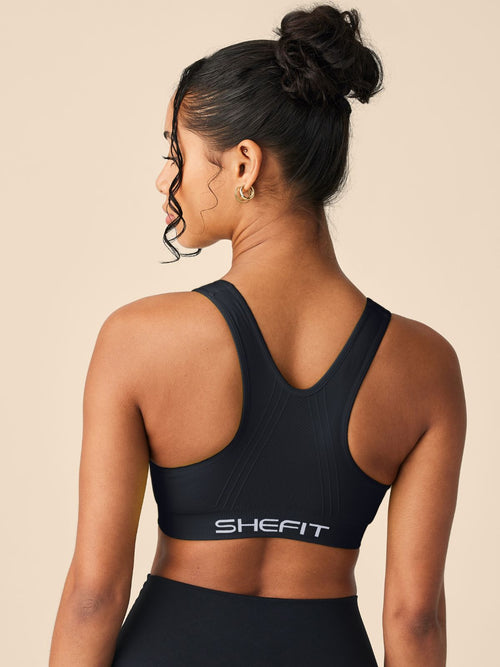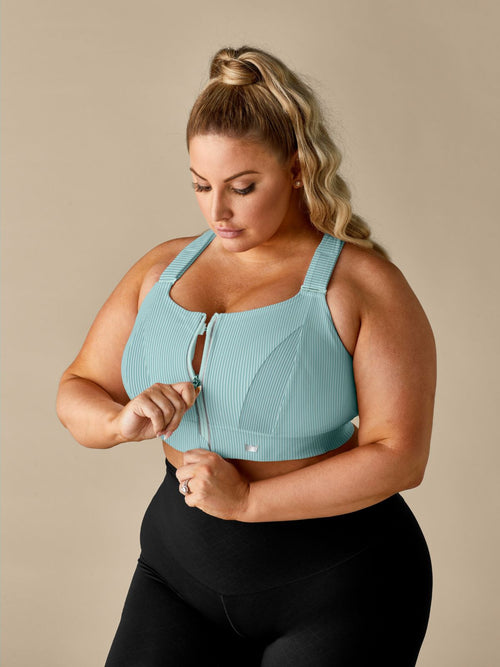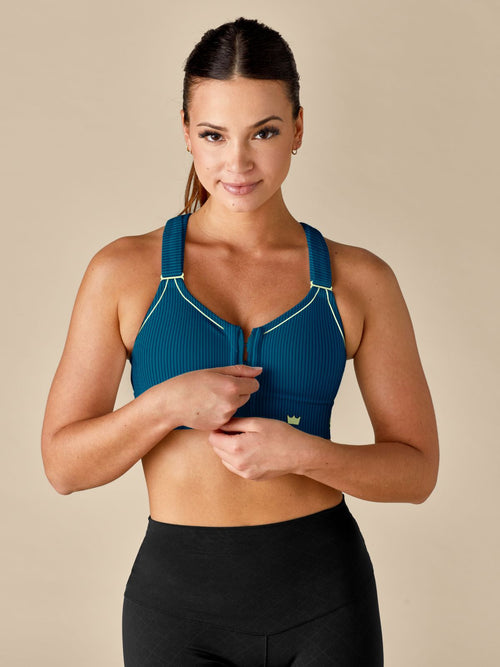New Year Sale 20% Off Shop Now
Is Pilates At Home Effective? And 4 Other Beginner Questions
The Pilates method can be broken down into two parts: exercises with equipment and exercises without. Perhaps that's an oversimplification, but it puts into perspective how much Pilates can be done without equipment. Similar to yoga, you only need a mat and a workout plan to get the benefits of Pilates.
At-home Pilates workouts, using nothing more than a mat and the weight of your body, can be just as effective as using expensive equipment in a studio. With a comfortable surface and your body, at-home Pilates can improve balance, strength, and flexibility. You don’t need a studio or fancy equipment to do Pilates properly.
The major benefit of going into a studio is the quality of instruction, which is helpful for all practitioners. Thankfully, you can get high-quality Pilates instruction right from home, whether that's watching a video or following one of SHEFIT's how-to guides.
The 4 Most Common Questions About At-Home Pilates
For those of you embracing a Pilates journey from home, we'll answer three of your most burning questions to help you get the most effective workout. Let's get started!
1. Are 30 Minutes of Pilates A Day Enough?
30 minutes of Pilates a day is more than sufficient. While Pilates was designed to be safe for daily exercise, for beginners two to three sessions a week in 30-minute intervals is a high enough frequency and duration to produce desired fitness results.
Joseph Pilates (yes there's a person behind this) envisioned a form of exercise that was safe enough for people to do every day. However, two to three sessions per week are enough for beginners according to Pilates instructor, Melissa Nagaib.
If you feel motivated to do Pilates daily, 30 minutes is plenty. Some people prefer to condense their sessions into two or three one-hour workouts per week. This is enough time to make improvements, says Nagaib.
She has clients that work out two to three times per week and they notice improvements rather quickly. People who were previously in pain notice that their injuries hurt less and they begin to move better shortly after starting Pilates.
With Pilates, duration isn't the priority.
In Pilates, Quality is More Important Than Quantity
For beginners, it’s important not to overdo it. Working out too often can lead to injuries and illness. While Pilates is safe, it can be a shock to the body at first. Pilates instructor Jess O’Toole agrees that three Pilates sessions per week are optimal.
Pilates is different from weight training or running on a treadmill.
One of the goals is to develop a mind-body connection. This is done by focusing on the breath and the muscles you’re recruiting during each movement. The concentration on each movement is part of the benefit of Pilates.
O’Toole explains that when you learn each movement properly, your posture improves because your body gets better at aligning itself. You’re less likely to get injured as your posture improves, particularly for people who have jobs that require a lot of sitting.
You’ll notice some of the benefits of Pilates soon after starting, but it’s important to have patience. It takes time to figure out the nitty-gritty of each exercise, such as the breathing, and specific cues for each movement. The language Pilates instructors use may seem foreign at first, even if you’ve done other workout routines.
2. Are There Advantages To Buying A Pilates Reformer?
Purchasing a Pilates Reformer will add variety to at-home workouts, plus you'll be able to adjust the resistance, a feature not possible with Mat Pilates. The downside of a Reformer is the high cost and that some can take up a lot of space.
Many of the Pilates exercises you do on a machine are similar to the ones you do without, according to Pilates instructor Cara Bonney, but because you can adjust resistance, there's always a way to make Pilates unique with a Reformer.
There are plenty of movements you can do with a Reformer that you can’t do on a mat and vice versa, Bonney explains. The glute bridge, for example, can feel completely different when done on equipment compared to a mat.
Another benefit of machines is that they can make exercises safer for people who have injuries or think that Mat Pilates is uncomfortable. People with back problems in particular can benefit from a Reformer because they can lie on their back and do exercises with their spine supported.
3. Can You Lose Weight With Pilates?
While Pilates is a form of exercise and provides many benefits, it's difficult to lose weight with Pilates. You will burn calories, but it might not be a meaningful amount. Pilates can help you tone your muscles, improve your posture, and make your body more flexible and aligned.
But if you’re looking for a workout that will help you lose weight, you might want to consider something else that supports an increased heart rate over an extended timeframe.
However, there is one disclaimer to this question - the answer is still a bit unclear, here's why.
The Weight Loss Answer Isn’t Clear
A group of researchers looked into the effects of Pilates on different aspects of the body. They had one group of adults perform Pilates three times per week for eight weeks, and another group that was inactive over the same period.
Compared to people who didn’t work out, Pilates practitioners lost body fat and decreased the size of their waist, arms, and chest. They also improved their flexibility and core strength. The results of this study were positive, but one study can’t determine an answer.
A different study, published in 2022, determined that there wasn’t enough evidence to say for certain whether Pilates could help people burn fat. This was a meta-analysis, meaning it compiled and analyzed the results of multiple studies.
While some studies discovered a positive impact of Pilates on weight loss, some showed that it didn’t have an impact, and some research wasn’t thorough enough to be trusted.
For now, it’s safe to assume that you shouldn’t rely on Pilates for weight loss if that’s your goal. Certain forms of cardio or weight training are probably more effective. Instead, use Pilates for its proven benefits, such as improved balance, core strength, and injury prevention.
4. How Do Beginners Do Pilates At Home?
Research has yet to determine whether mat or equipment Pilates is better. All you need to know is that doing Mat Pilates at home won’t hinder your progress. In fact, Mat Pilates can be more advanced than using equipment because your body doesn’t have anything supporting it.
Aside from grabbing a mat and following a workout, for beginners to improve the quality of Pilates from home, there are two critical components, fundamentals and breathing:
Tip 1 - Focus on Fundamentals
As a beginner, you might feel like you’re wasting time practicing Pilates fundamentals, such as control. But the truth is that even advanced practitioners spend time on the basics, says Certified Personal Trainer Jake Dickson.
Even if you’re a pro athlete, you’re considered a beginner the first time you walk into a Pilates studio because their philosophy is unique.
When you start a Pilates program, much of your time will be spent figuring out how to control your body.
You’ll learn how to stabilize one part of your body, like your core, while you move another body part. It might seem painstaking at first, but control and precision are integral to Pilates, according to Dickson.
Tip 2 - Master Your Breathing
Perhaps you’ve never paid much attention to the way you’re breathing while working out, but it’s one of the first things you should learn as a beginner in Pilates. Breathing is perhaps the most important skill to master in Pilates. Here's a concept you can expect to learn about.
Three-Dimensional Breathing
Three-dimensional breathing is a concept that maximizes each breath you take by expanding your rib cage and allowing more space for air. It also stabilizes your core. It's a simple concept that requires mastery - let's give it a try with two steps:
- Step 1: Put your hands around your waist.
- Step 2: Breathe in and press your waist into your hands
Done correctly, you should notice your entire abdomen expanding. This means your belly should move forward and your waist should expand to the sides and towards the back.
This form of breathing stimulates muscles in your lower back, abdomen, hips, and pelvic floor. Activating these muscles with proper breathing can make you stronger and more stable during mat exercises. It’s also helpful for people recovering from lower back pain or pelvic floor problems.
Pilates Is Ideal for Home Workouts
Whether you’re looking to get stronger, recover from an injury, or just want a consistent routine for your home gym, Pilates is the answer. It’s not the best form of exercise for people who want to lose weight, but it can improve your physical and mental well-being.
Pilates was designed to be done mostly without equipment. Practicing Mat Pilates will be as beneficial as using machines, and can even be more difficult. Stripping away external equipment will force you to focus on the building blocks of Pilates, such as breathing and controlled movement.


